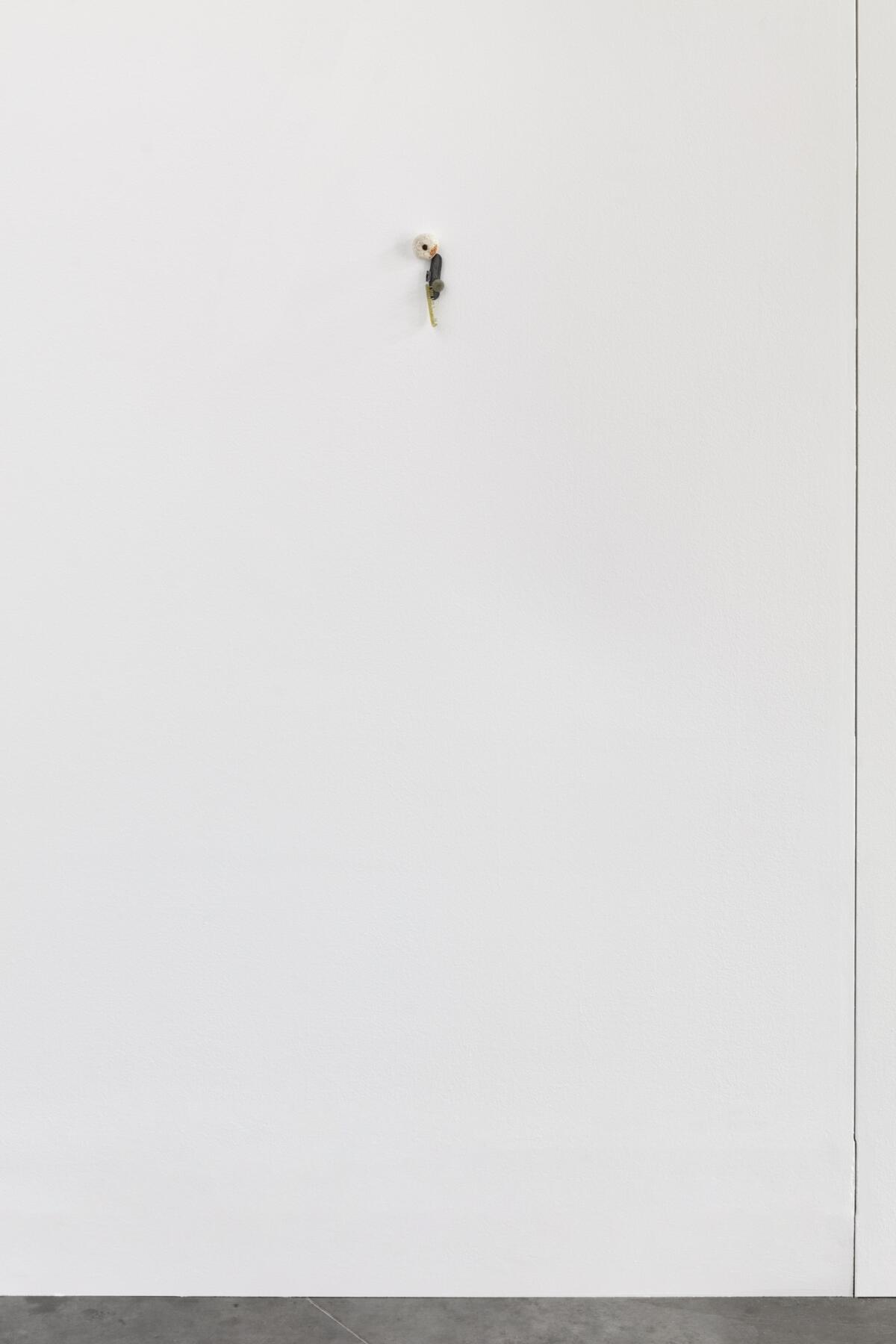The Crisis of the Object Revisited – David Fesl
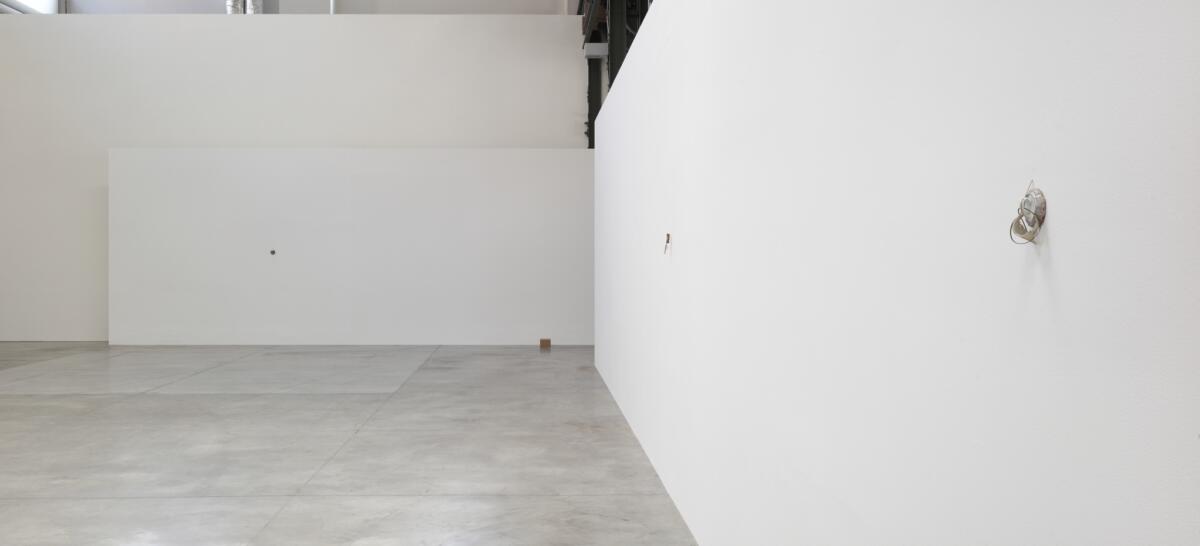
Perhaps it most resembles archaeology, piecing together the detritus of this dead civilization in the hope of understanding how and why we might have lived. It is possible to infer much about a culture from these small details: fragments of a pattern in clay, the grooves on an arrowhead or certain scratches on a flat stone. Two kinds of site contribute most to the record: middens and graves. It is rare to find an artefact in the context of its primary purpose. More often it survives where it was discarded, abandoned or buried. And here we also find, metaphorically at least, a key. The grave receives the things that will be wanted in eternity while into the midden go those that will never be needed again – there is a division and a system. But sometimes, of course, we find the same kinds of things in both places. Clay beads for example, a wooden figure, a bundle of letters from a former lover, the skeleton of a cat. It is at these moments – instances of connection or conjunction that seem to cut across the hierarchies we had begun, prematurely we now realise, to imagine – that we must be most attentive. These are the times when the culture seems almost, but not quite, ready to reveal its most important secrets; secrets that had once been sought in the well-preserved shapes of the syrinx or the silver lyre, but have since been carried away by the wind, along with the melodies the instruments once played.
For this and many other reasons, archaeology seems too limiting for a study that ranges so freely across the borders between nature and culture, found and made, and over all that lies between. Perhaps we must reach farther out, into zoology, botany and anthropology, and further in, down through palaeontology and into the rocks, into the Earth itself. We are often reminded that the fossil record is so sparse that it is little more than a history of teeth. Whatever else survives must be transmuted: petrified, encapsulated, imprinted, frozen. So the image of the lost world is pieced together from whatever fragments chance and accident have chosen to offer us: a sabre-toothed tiger drowning in the tar pits of Los Angeles; Muhammed ed-Dib hunting a stray goat into a cave full of pottery jars; these few tail-feathers set in a piece of Cretaceous amber no larger than a child’s fist. It is only once the remains have been cleaned and hardened that the real work begins.
The famous slave owner Thomas Jefferson once believed he had discovered the fossil remains of a giant American lion that he thought might still exist somewhere beyond the Rocky Mountains. However, the leap of imagination required to move from these fragments of teeth or claws to the possibility of a living monster is not only a trial that sifts out hubris and hypocrisy, but a test of our individual ability to conceive of a functioning collective reality. The surviving pieces of the skeleton have been separated from the substrate and laid out on the table, but not yet brought into significant relation. And it is now, as we look again at the material and wonder once more about the value of our methods, that another approach suggests itself.
This regime of rational imagination, the question of how the wounds of the present can produce the past, is the domain, perhaps above all, of the detective – less an occupation than a meta-figure for the spiritual core of modernity itself. The detective must become convinced both that the world is trying to tell us something, and that the message will make sense and can be read. This psychotic attachment to human reason assumes, among other things, that the universe is a text that, when read correctly, will give one access to the truth. But there is no lost model to which these pieces all belong. The primary procedure here is not analytic, but synthetic. One can easily show that the potential of the analytic method is finite in a universe such as this – a universe built from identical, indivisible quanta – whereas the synthetic method may be infinitely productive, given that each permutation can itself be recycled as new input.
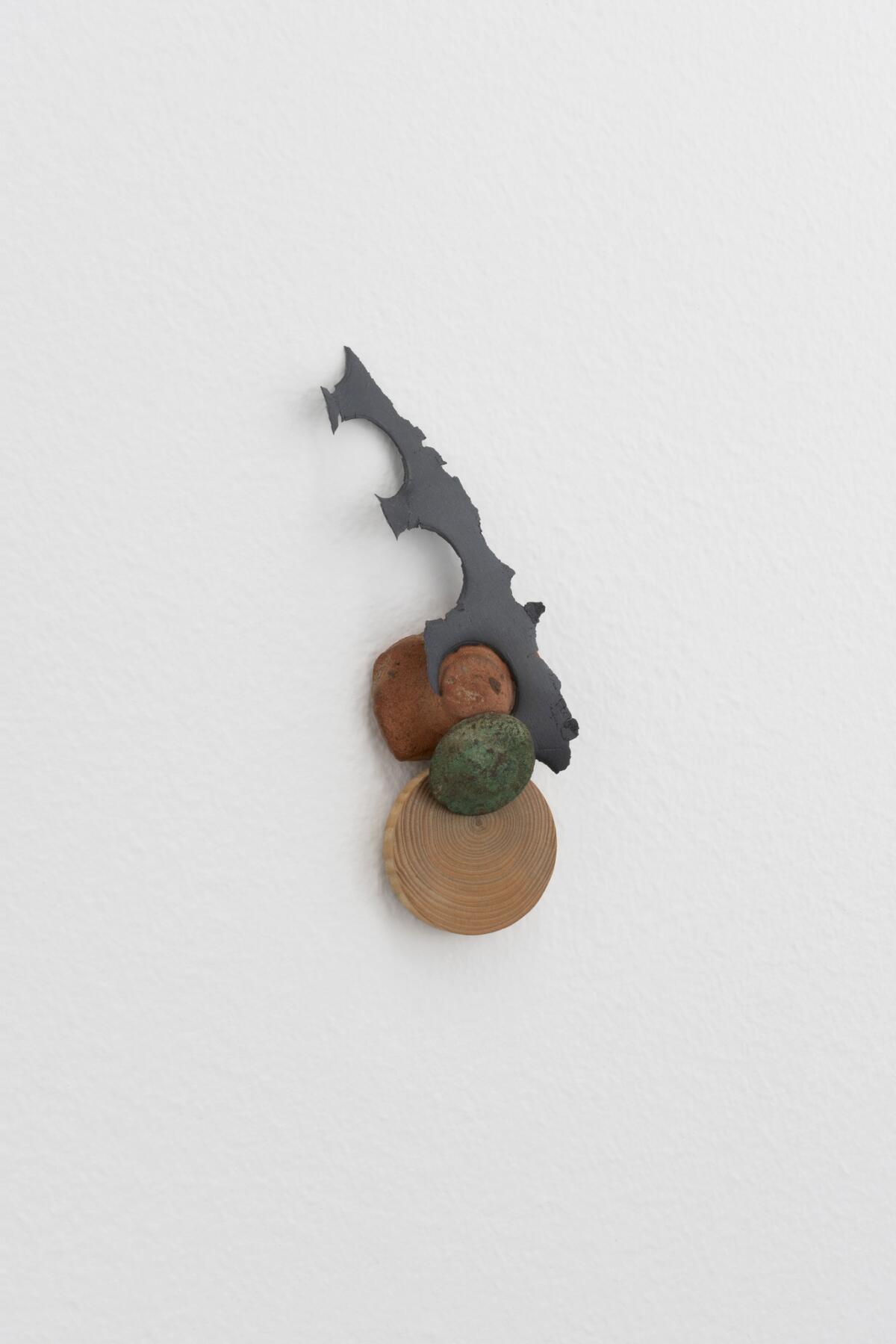
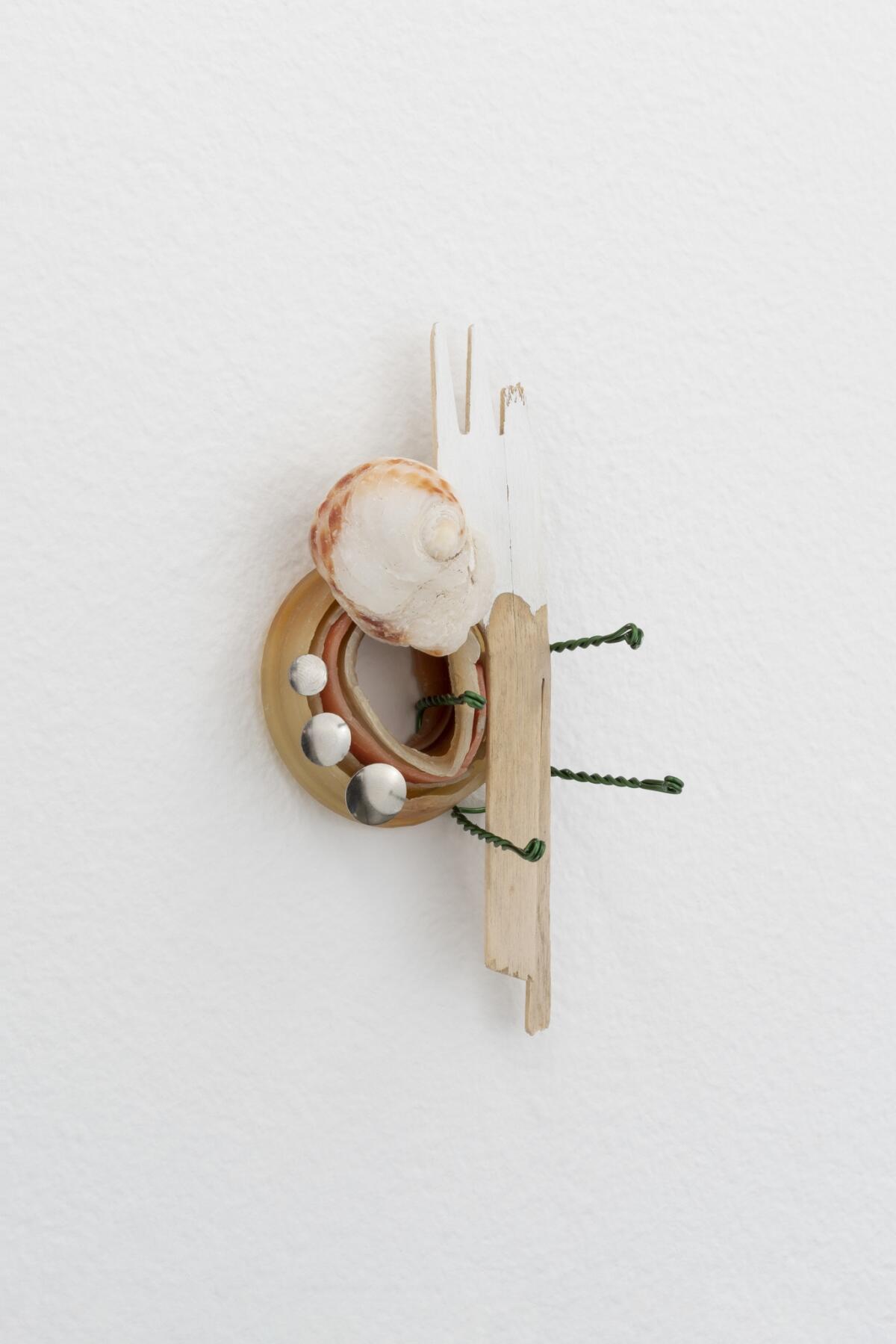
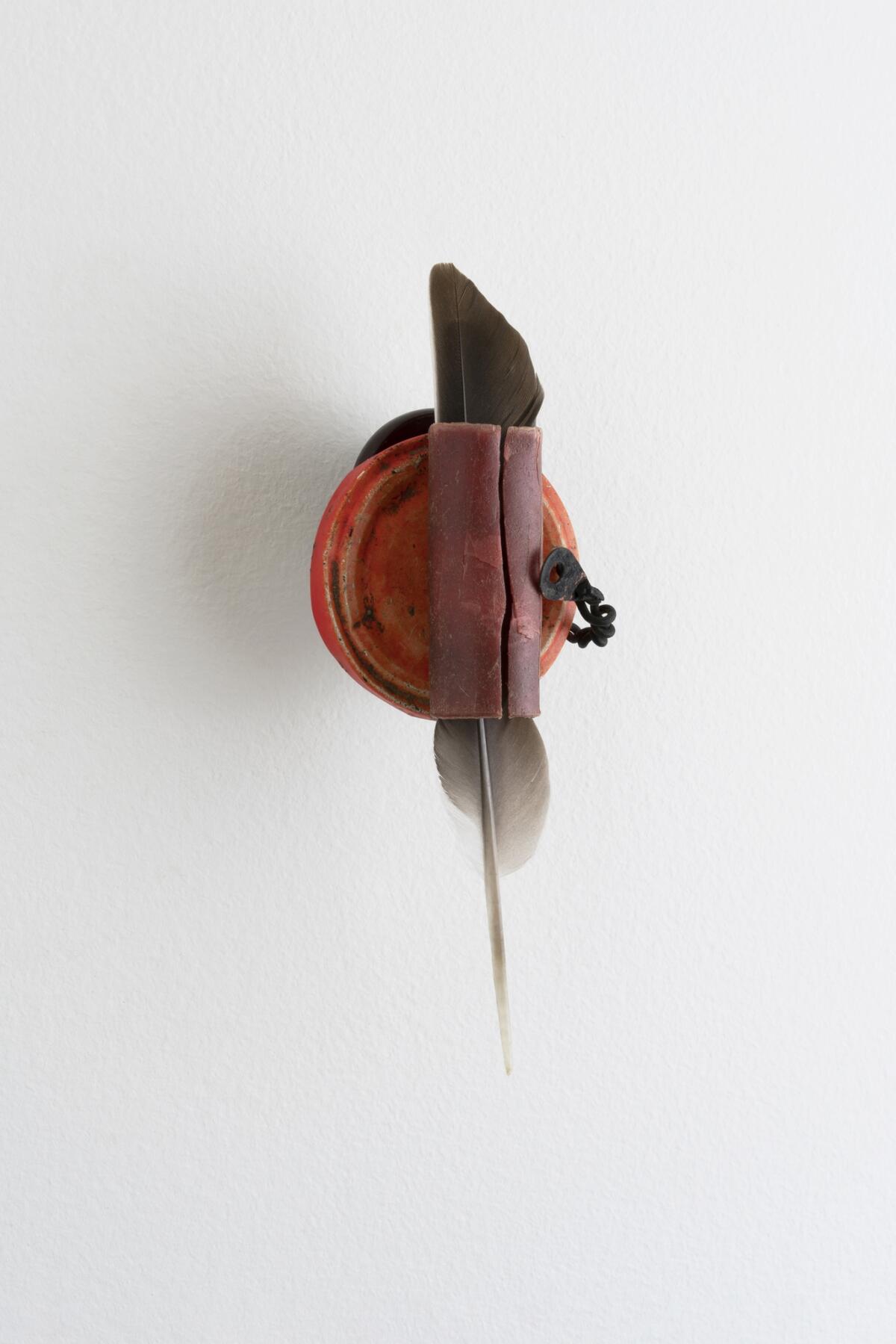
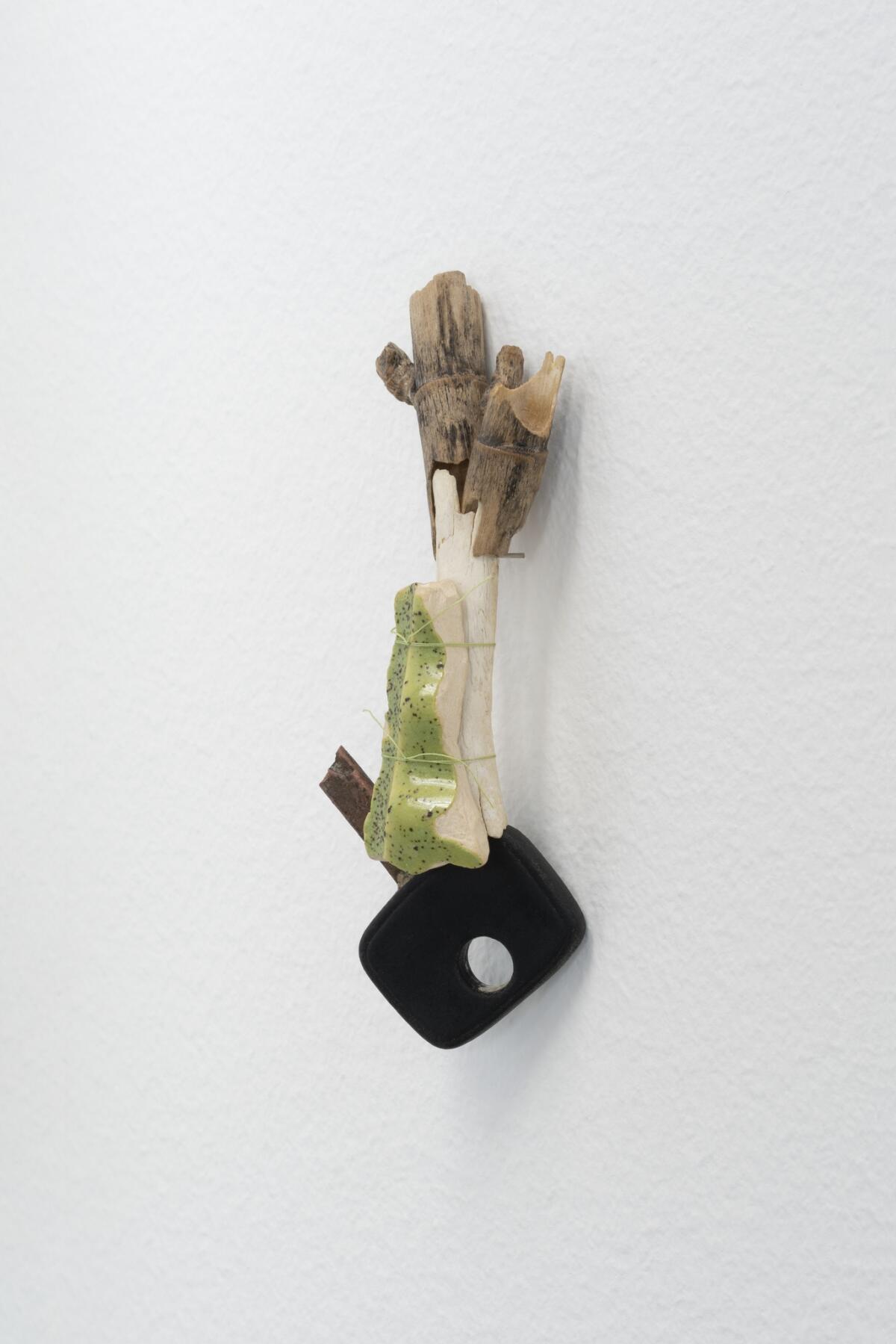
Alchemy, of course, is the study that has contributed most to the philosophy and practice of the combination of physical materials. We are not talking about simple chrysopoeia, but the melding and remaking by which the raw stuff of existence seeks to regain its original divine form, or by which new kinds of unity may be created. It was the alchemist Jabir ibn Hayyan who first essayed, a millennium ago, the creation of artificial life; many practitioners still hold the belief that any operation – purification, corruption, eternal preservation – perfected on alchemical compounds may, in the right circumstances, be performed on the human soul itself.
We understand that, in defining the method as synthetic, we have knowingly suppressed the essential initial work. This preliminary activity is not the workmanlike preparation of a craftswoman selecting timber, not the decade-long training of the pianist who strives to reduce the techno-physiological barrier between thought and expression, nor the layered process of the still-life painter, arranging ripe fruit, fresh flowers, the carcass of a game bird or a rabbit, cut glass in the candlelight, a cascade of velvet and silver – then sizing, priming, sketching and grinding pigment in a mortar. Or, on reflection, perhaps it is not so very different to this last example. Certainly, even at the early stages of the process, one finds a sensibility at work. We can try to guess the rules, and so naturally we do. A certain range of sizes. Nothing too big to hold in one hand, nothing that moves of its own accord, nothing rotten. Nothing so coded that the code can’t be overwritten. Nothing that is out of reach, nothing that was already here. Nothing that can’t participate in the process, whatever the process is. But above all, ambiguity, the paradoxical sense of a decision neither made nor refused. It could be anything, but it is not; of all the things it might have been, it is undeniably this thing.
Where do they come from, these things? In the lexicon of art, they are found objects – and if they’re here in front of us they can’t be entirely, objectively lost – but finding implies searching, implies looking, implies purpose, as much as it has come to connote chance or happy accident. You can find an answer, find a way through, you think you’ve found somebody who understands, and then you find that it’s too late. The process, whatever the process is, is already in motion. J. L. Borges, in his essay on Kafka, mentions Zeno, Han Yu, Kierkegaard, Robert Browning, Léon Bloy and Lord Dunsany as writers who, if Kafka had never existed, would have no common ground or clear connection, but who may now be grouped together as Kafka’s precursors. My guess is that every object gathered here becomes part of the context that will trap the next, and also changes those already found, so that meaning accrues to the relationships. Which is to say that there is a grammar at work, even if, as with any living grammar, its rules cannot be simply written and need not be followed.
As it turns out, all things have names, or at least they can be named, be caught in language. Each found scrap or fragment (not all are scraps or fragments, I realise; some were complete in themselves before they became parts of a new hybrid object; some things, buttons for example, are always both wholes and parts), is named, but each is also a phoneme or a phrase in the vocabulary of the process, which has not been formalised but remains as close and distant as a voice on the radio, breaking through static as you cross the border at night, talking softly in a language you don’t understand, as mysterious and real as birdsong.
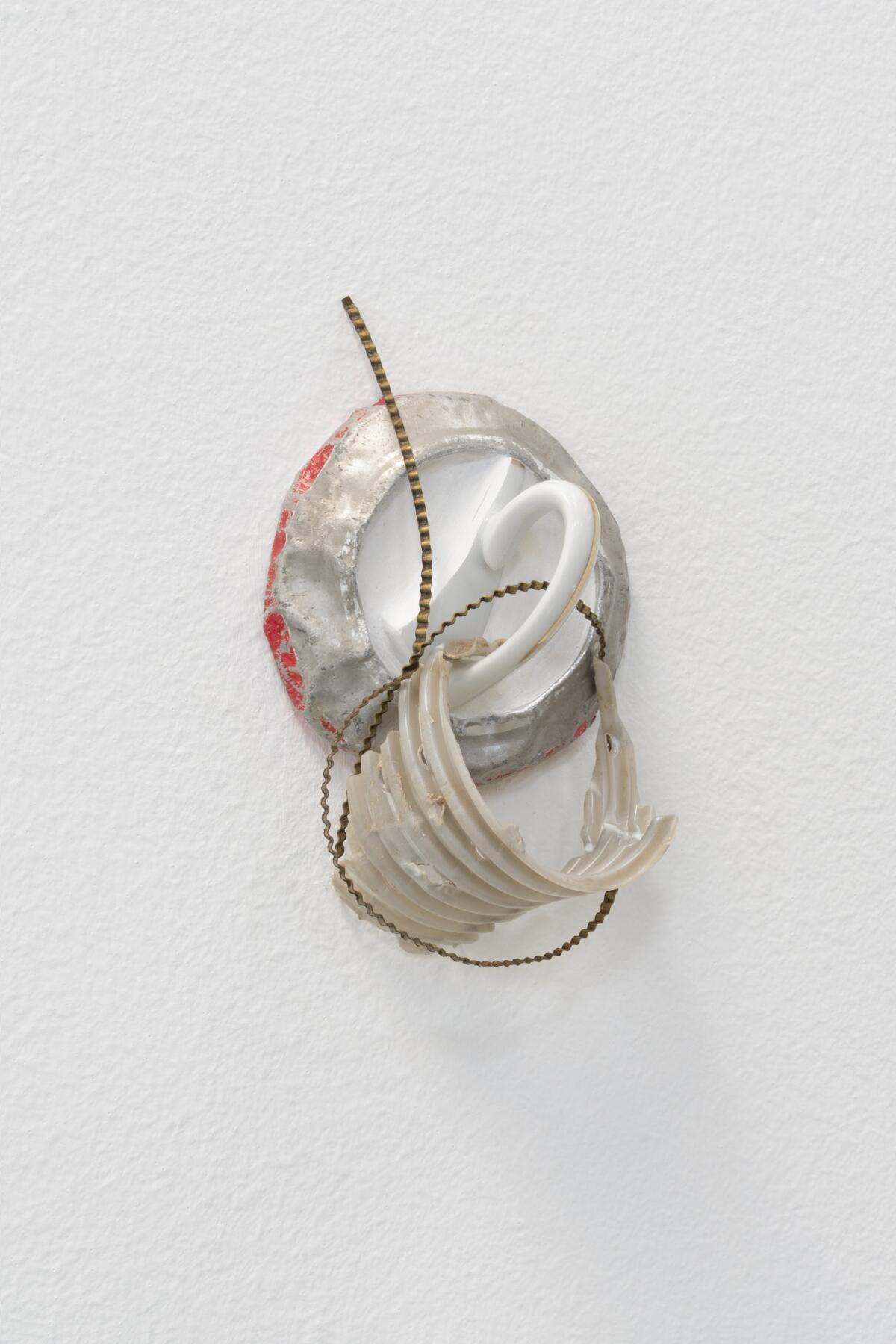
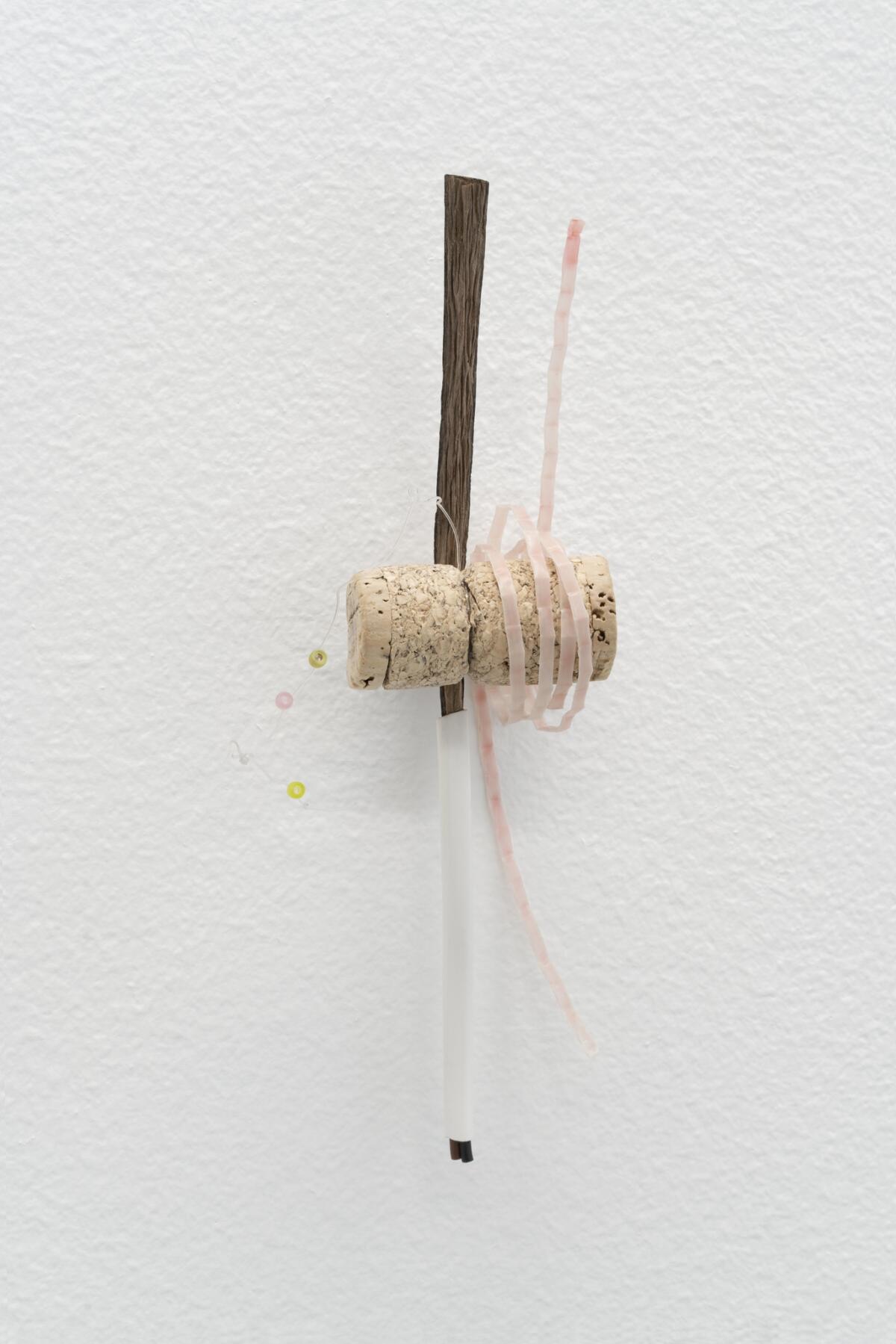
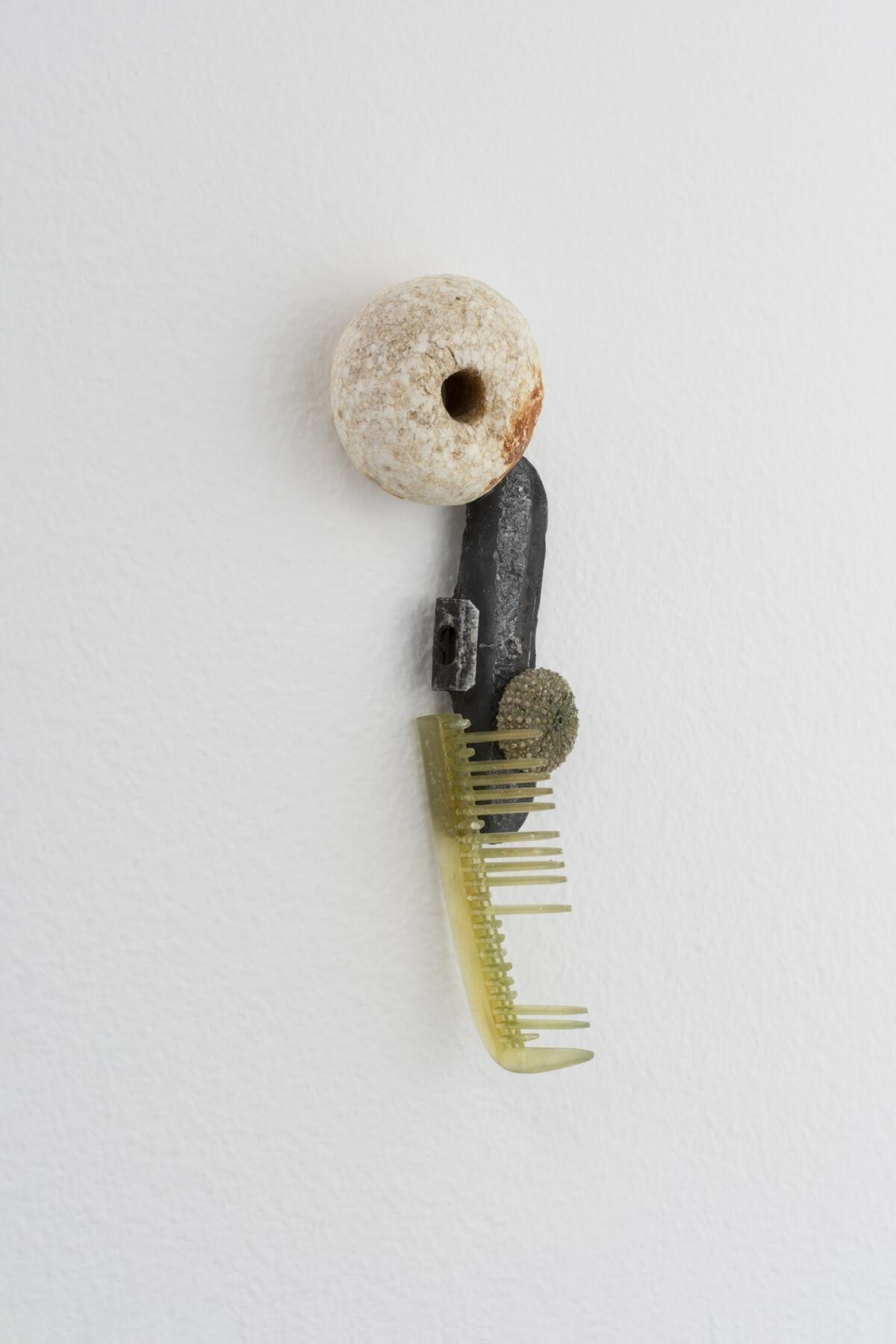
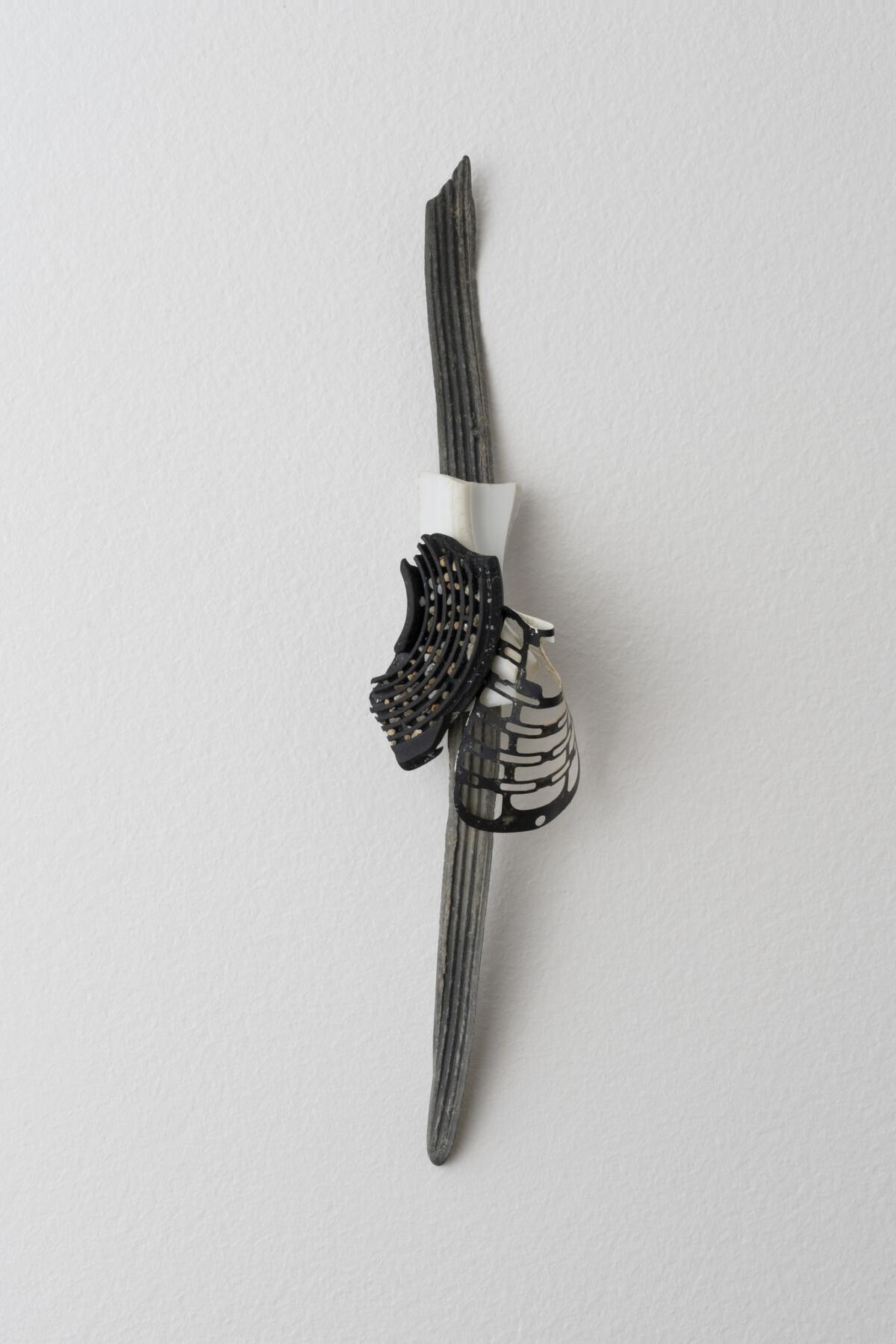
André Breton, theorist of Surrealism and originator of the poem-object, spoke of “the sublime procedure which lies at the heart of poetics: it seeks to exclude the exterior object as such and to view nature solely in its relation to the inner world of consciousness”. Art need not be a thing in the world; poetry can produce the impression of the thing’s existence. Logic – an appropriately dreamlike logic – immediately suggests a therefore, that the impression of a thing’s existence may be sufficient to produce poetry. And to achieve the condition of poetry is, as everybody knows, sufficient justification for any act.
There is an art to this art that the jeweller and the surgeon might both recognise, but it is, of course, possible to go too far: the kitsch violence of a dandelion on cracked concrete; a plastic cigarette lighter in the gizzard of a dead albatross. At some point the stress becomes too much, the sutures of reality fail, and the images consume themselves; the ability to play with this implicit threat of failure, to dance on the cliff’s edge, we call technique. It is widely acknowledged that we are living through a transition (we are always living through a transition) from a world dominated by industrial production to a world dominated by immaterial labour, from the world of raw reality to the domain of pure mediation.
The new class of digital objects – bundles of attributes, metadata, meshes, textures and events – offers a way to evade our limitations, with every kind of risk-free manipulation, endless undos and infinite respawning. In particular, whatever hierarchies or types govern their interactions can always be altered to allow them to merge or intersect. In the ray-traced light of this near-future context, these sculptural conjunctions of metaphorical driftwood seem almost to touch the weightless condition of virtuality, but they can’t escape what we can still meaningfully call the reality of their existence. Just as a poem might include an incantation or a prayer, so these assemblages can contain powerful elemental constructions. The Taoist alchemists only had to mix saltpetre, charcoal and sulphur to change the world forever. Our modern materiality has stricter rules, but its truths are no less in doubt.
Still there is a metaphysics to explore. These recipes, poems, reactions, morphic resonances – these things – may be aligned with deeper forces, speak an older language, and have the power to operate on a plane that touches our everyday universe only at certain privileged moments. If they are not spells whose power has already made itself manifest, we can nonetheless imagine that, beyond their potential to create meaning in the semiotic sense, these embodied texts and condensed sensations might also be employed in what was once called divination. As Lem suggested, since we are trapped in language, the future of the culture can be guessed, if not predicted, by permuting and recombining the words we already have. For example, from the possibility of the word crypto-exopaleobotany we might have expected to encounter the theoretical biologies of imaginary fossil plants extrapolated from recent close-up photographs of the surface of Mars, if not foreseen the strange pleasure to be found in their contemplation.
A strange pleasure, too, in these artworks, around which time seems to move differently, to flicker, or to ooze like poured honey. I like to imagine some future archaeologist digging through the layers of blackened desert into the buried ruins of 21st century Europe, and to imagine that, by some generous and beautiful twist of fate, the very first thing they find is not an iPhone, or a Volkswagen, or a pair of Crocs, but the archive of David Fesl.
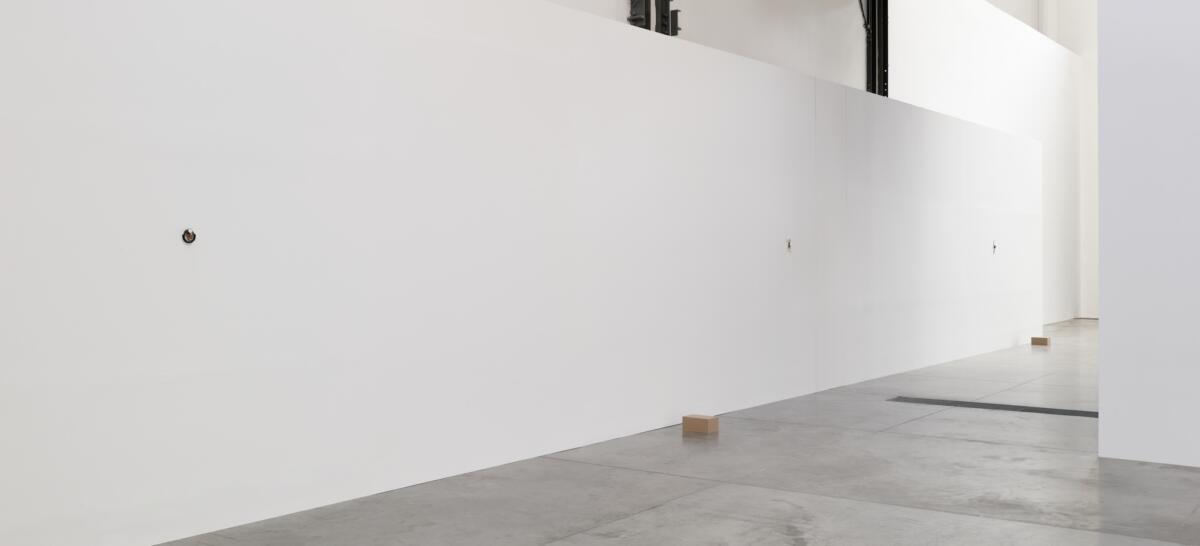
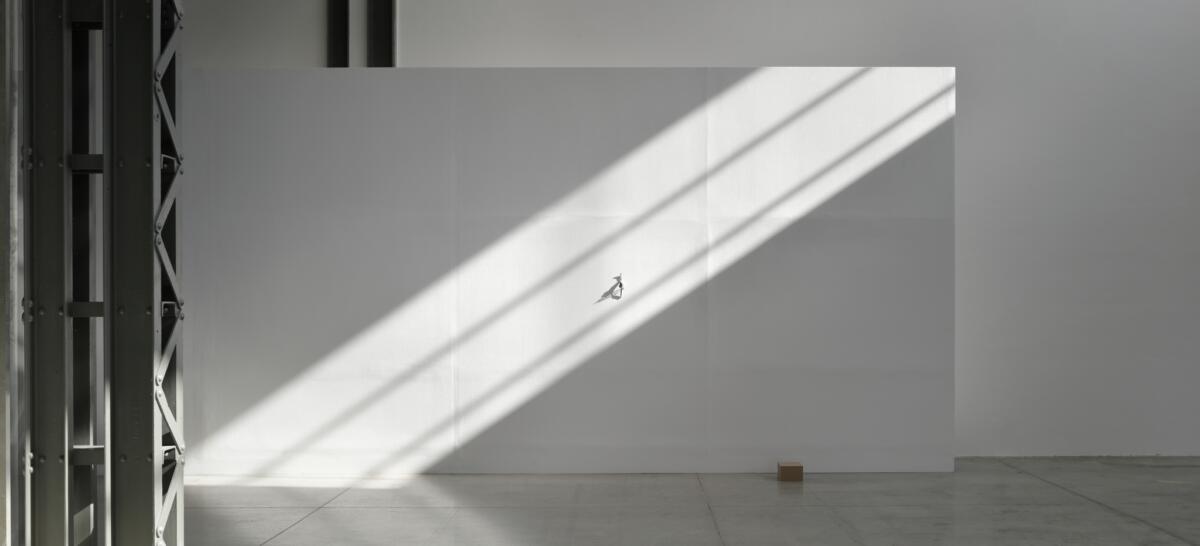
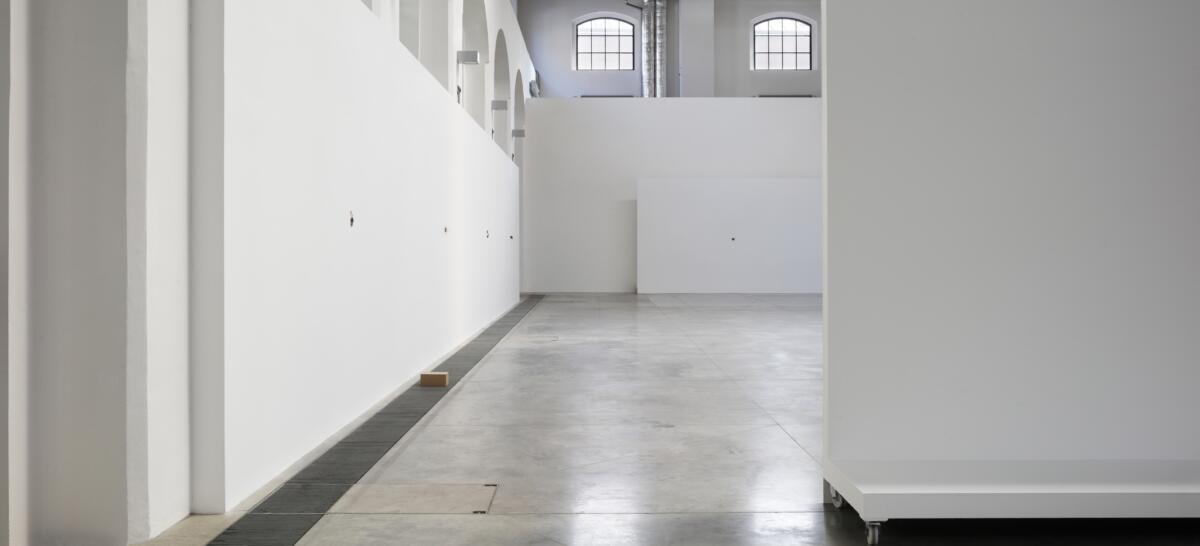
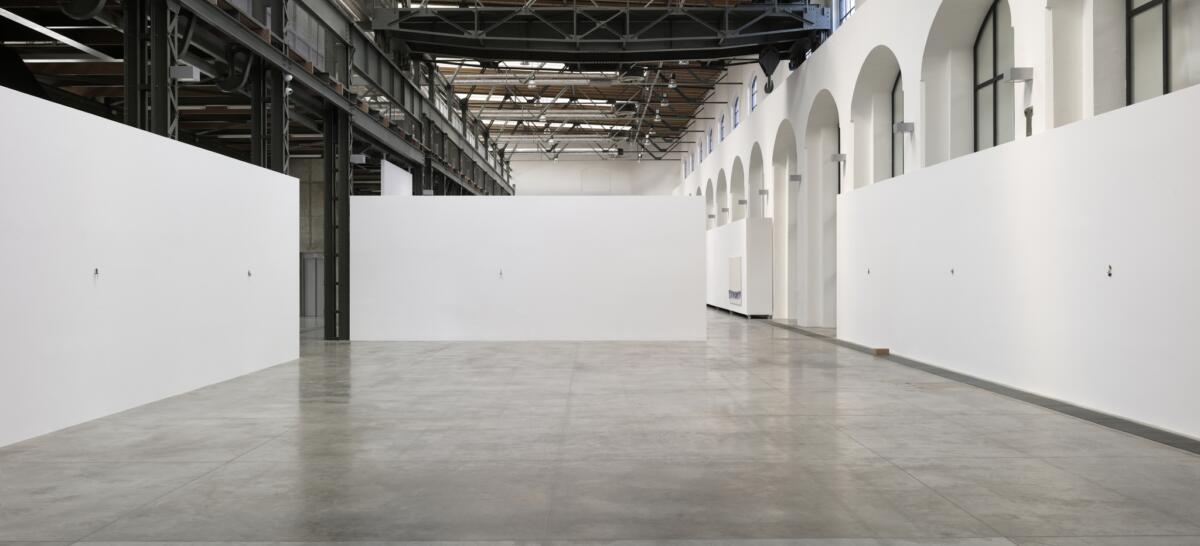
Bibliography
QUINN, C. Edward. Thomas Jefferson and the Fossil Record. In: Bios, vol. 47, no. 4, 1976, pp. 159–167.
BORGES, Jorge Luis.Kafka and His Precursors. In: Labyrinths: Selected Stories & Other Writings. New York: New Directions Publishing, 1964.
André Breton, lecture delivered at the Mánes Gallery, Prague, 29th March 1935 and The Crisis of the Object, 1936
LEM, Stanislaw. The Futurological Congress. New York: Seabury Press, 1974.
Imprint
| Artist | David Fesl |
| Exhibition | THE CLUMSY IMITATOR OF ARTIFICIAL LIFE |
| Place / venue | Fait Gallery MEM, Ve Vaňkovce 2, Brno |
| Dates | 24.05.2023 - 29.07.2023 |
| Photos | Martin Polák |
| Index | David Fesl Fait Gallery Martin Polák Will Bradley |

